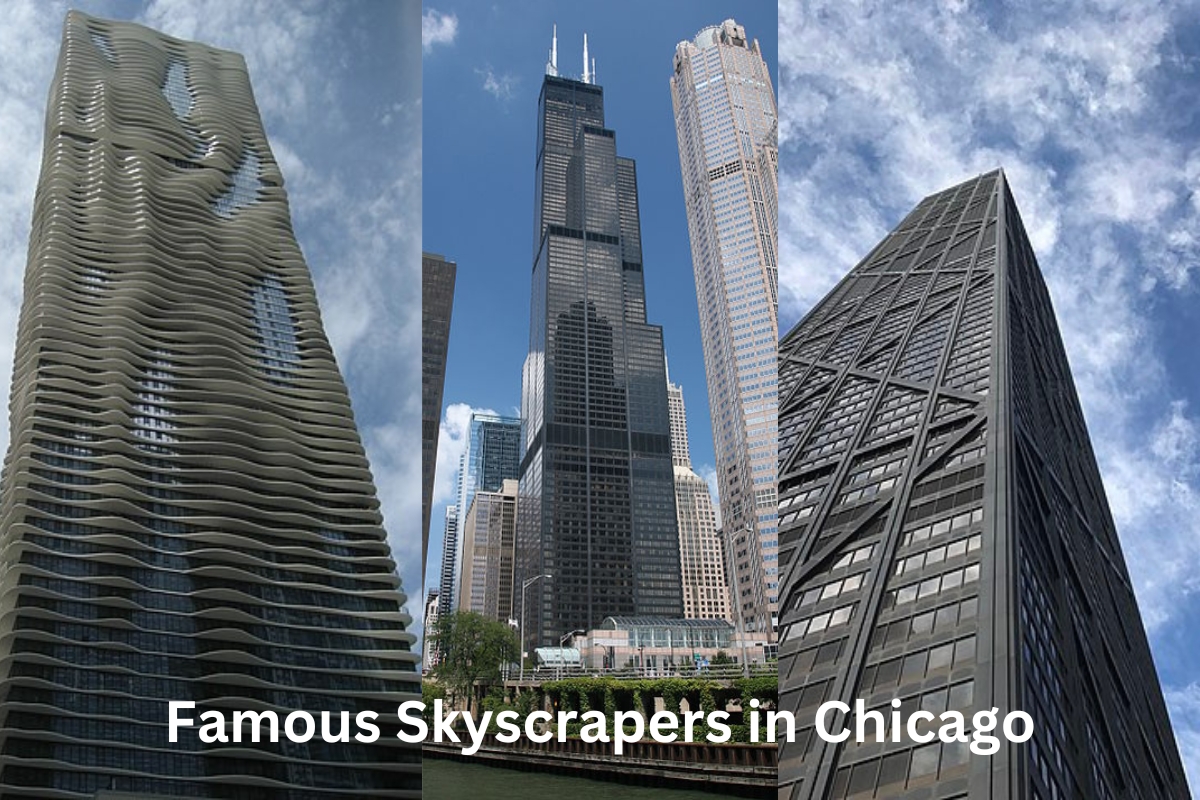In addition to being one of the most populous cities in the United States, Chicago is famous it’s enormous skyscrapers.
The city was given the moniker “Windy City” many decades ago, and it has since earned a reputation for being the location of some of the most notable and historically significant buildings in the entirety of the United States.
New York may get all the fame for it’s skyline, but Chicago has definitely closed the gap in terms of how many massive skyscrapers it has.
In this post, we will take a look at ten of the most well-known skyscrapers in Chicago, as well as the architects who were responsible for their design and some of the history that lies behind each building.
Famous Skyscrapers in Chicago
1. Willis Tower
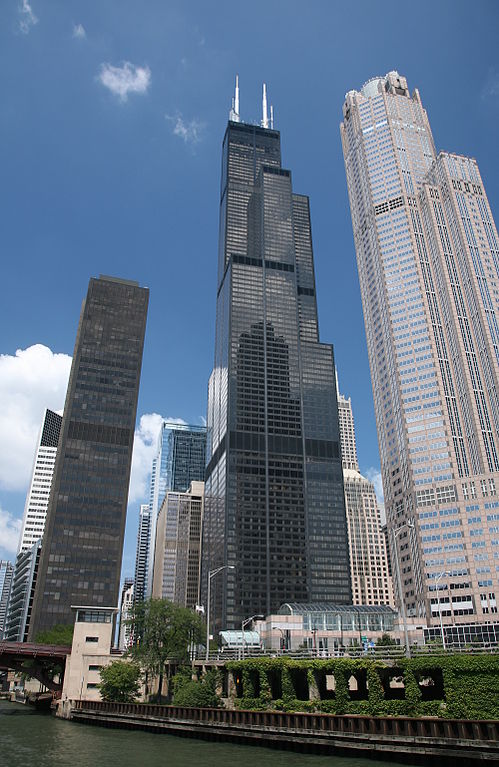
The Willis Tower is one of the most recognizable skyscrapers in Chicago.
It was once known as the Sears Tower, but it was purchased by Willis Group Holdings Ltd., a London-based insurance brokerage firm.
It is most commonly known by its previous name. The structure’s incredible height, which makes it one of the tallest buildings in the world, is the fundamental reason for the skyscraper’s international reputation.
The Willis Tower was designed by Fazlur Rahman Khan and Bruce Graham, two well-known architects with a reputation for designing and constructing massive, multi-story buildings.
When viewed from the ground, the Willis Tower appears to have just 108 story’s, but it actually contains a basement level and two more stories at the very top, bringing the total number of levels in the skyscraper to 111.
The building’s planning and design work began in 1969, and construction ultimately began in 1970.
Willis Tower was finished in 1974 after construction workers erected it in a time frame that was less than that necessary for the majority of other structures of comparable height.
It was the tallest structure in the world until it was surpassed in height in 1998 by Malaysia’s Petronas Twin Towers.
2. John Hancock Center
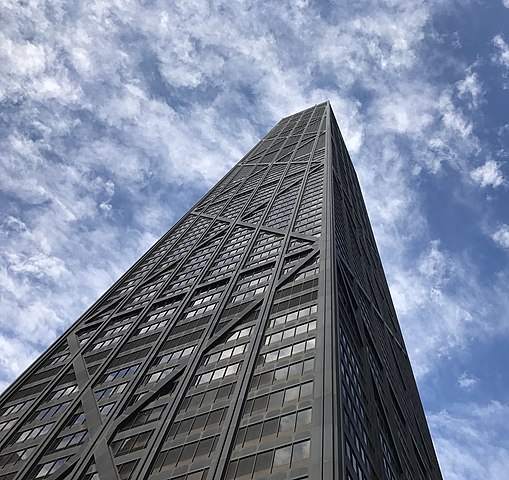
The John Hancock Center, located in the city’s Magnificent Mile section famed for the most aesthetically magnificent skyscrapers and other structures in Chicago, is one of the city’s most immediately recognized buildings.
The facility was built in the mid-1960s and was initially known as the John Hancock Center since it was partially funded by the John Hancock Mutual Life Insurance Company.
Fazlur Rahman Khan, who is recognized for designing some of Chicago’s other famous structures as well as different skyscrapers across cities in America during the mid-20th century, designed the building.
The project began in 1965 and was completed three years later, in the summer of 1968.
The John Hancock Center was purchased in 2013 by a business that elected to rename the structure 875 North Michigan Avenue, but the name it had held for more than 40 years would continue be used by locals and others throughout Chicago.
The structure is still known as the John Hancock Center today, and its distinctive Structural Expressionism architectural style distinguishes it among the city’s many skyscrapers.
3. Tribune Tower
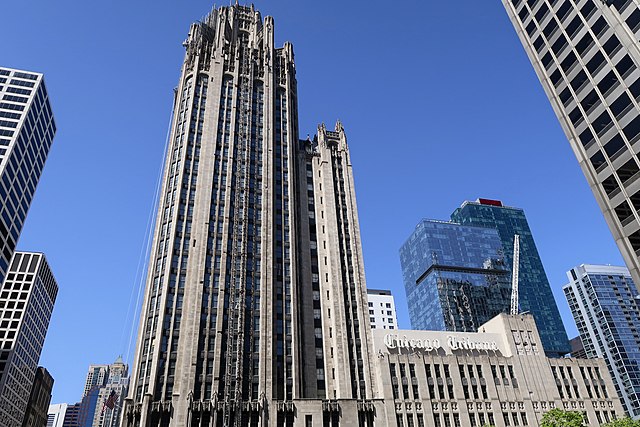
The Tribune Tower, located in the center of Chicago’s downtown, is yet another of the city’s highest buildings.
The skyscraper was initially called after the Chicago Tribune, the city’s most prominent newspaper, which was controlled by Tribune Media and Tribune Publishing.
Raymond Hood, a renowned American architect recognized for his work in the Art Deco and Neo-Gothic architectural styles, created the structure.
During the early 20th century, Hood collaborated with renowned architect and designer John Mead Howells. The building was constructed in 1923 by Howells & Hood, the firm that bore both of their names, and construction began in 1923.
Crews labored feverishly to complete the mammoth project, which was one of Chicago’s largest in size and scope up to the 1920s.
The Tribune Tower was built and inaugurated in 1925, just two years later. The antenna spire on the top floor of the tower is 496 feet tall, and the building has undergone several renovations throughout the decades since it was first constructed.
4. Aqua Tower
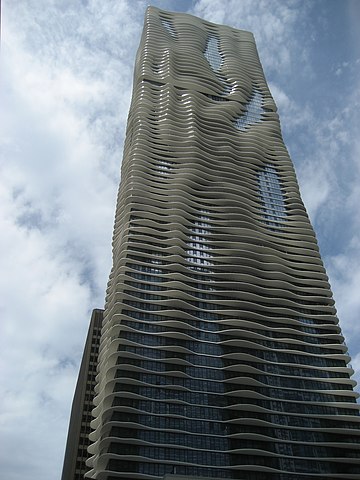
The Aqua Tower, located in the Lakeshore East development near the city’s central business district, is one of the most striking structures in Chicago.
This appropriately-named edifice appears to have water accumulating along its sides, especially when viewed from a distance on a sunny day.
Jeanne Gang, a native of the Chicago region and one of the most accomplished female architects in the world, built the Aqua Tower.
In 2007, construction began on the skyscraper, and two years later, in 2009, it was completed. Due to its outstanding design and appearance, the Aqua Tower has become one of Chicago’s most recognizable monuments in the twenty-first century since its opening in the same year.
Gang and the other architects working with her were able to create a building that is unlike any other in the world through the use of illusionary architecture.
Her use of strategically-placed tempered glass and precisely-positioned partitions creates the illusion of water dripping down the building’s sides.
5. Merchandise Mart
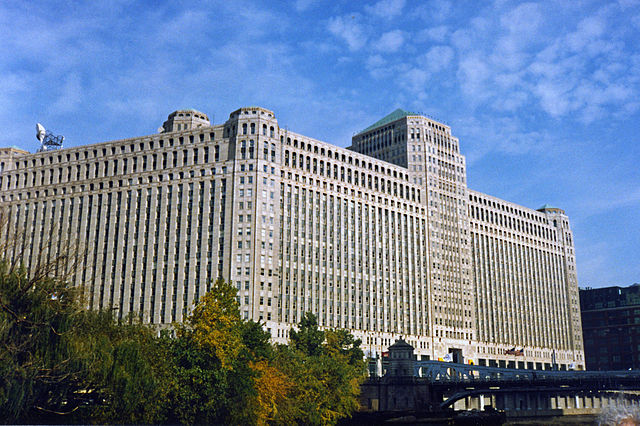
Along the banks of the Chicago River stands an Art Deco architectural marvel that is one of the city’s most historically significant structures.
The Merchandise Mart, another of Chicago’s most iconic structures, is located near the confluence of the Chicago River’s two branches, near the city’s core.
Alfred P. Shaw, a native of Chicago and one of the most distinguished American architects of the early 20th century, was responsible for its design.
Shaw collaborated with fellow architects from the firm Graham, Anderson, Probst and White to design the Merchandise Mart. The construction of the building began in 1928 and was completed just two years later in 1930.
More than 20,000 customers and buyers visit the Merchandise Mart on a daily basis, making it one of the largest retail and wholesale venues in the country.
Today, a variety of enterprises and retail outlets occupy the 4,000,000 square feet of floor space in the historic edifice.
6. Aon Center
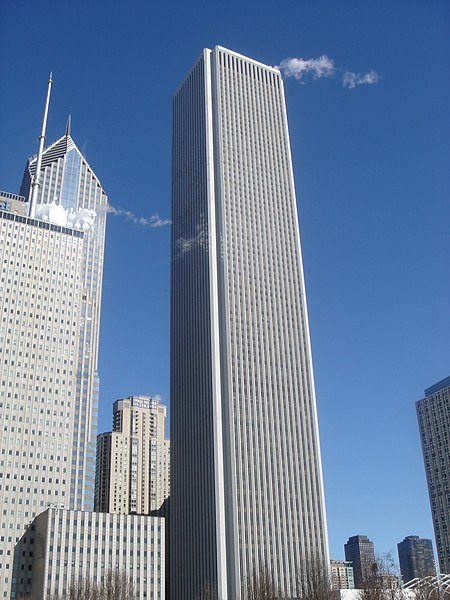
The Aon Center (200 East Randolph Street, previously Amoco Building) is a modern supertall skyscraper in the Chicago Loop, designed by architects Edward Durell Stone and The Perkins and Will partnership, and completed as the Standard Oil Building in 1974.
It is the fourth-tallest skyscraper in Chicago, with 83 floors and a height of 1,136 feet (346 meters), behind Willis Tower, Trump International Hotel & Tower, and St Regis Chicago.
The building is managed by Jones Lang LaSalle, whose headquarters are also located in the structure.
Aon Center is also home to the headquarters of Aon, one of Kraft Heinz’s two headquarters (the other is located in Pittsburgh), and the former global headquarters of Amoco prior to its takeover by BP.
Prior to the erection of the Sears Tower (now the Willis Tower) in 1974, this skyscraper was the highest structure in Chicago. It was also the fourth-tallest completed structure in the world when it was built.
7. Civic Opera House
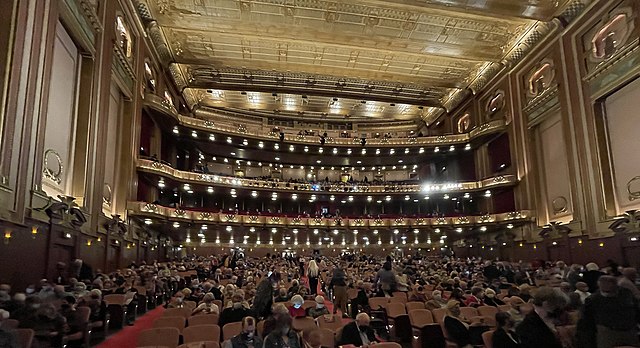
The majority of the world’s most renowned opera houses are located in Europe, however Chicago is home to the most iconic and renowned opera theater in the United States.
The Civic Opera House is located in the heart of the city near Lake Michigan and has a more elegant and historic appearance than many of the other contemporary buildings in Chicago.
Samuel Insull, a prominent American industrialist, commissioned the architectural firm Graham, Anderson, Probst & White to design and construct the Civic Opera House according to his designs. The structure was erected in 1929, and it rapidly became one of Chicago’s most popular destinations.
The enormous structure is frequently compared to a huge chair or throne, and was sarcastically dubbed “Insull’s Throne” in the years following its construction.
The Civic Opera Theater’s enormous auditorium is the second-largest opera house on the North American continent and can accommodate more than 3,500 people.
8. Carbide & Carbon Building
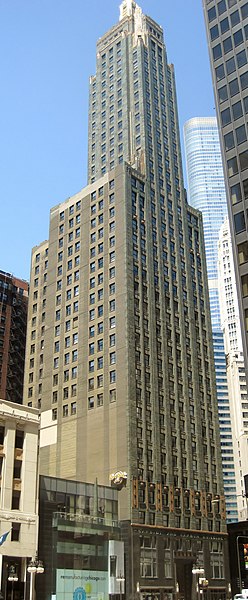
The Carbide & Carbon Building is a 37-story, 503-foot (153 m) Art Deco skyscraper on Michigan Avenue in Chicago that was constructed in 1929. In 2004, it was turned into a hotel.
As a regional office for Union Carbide and Carbon Co., the building was designed by the Burnham Brothers. On May 9, 1996, it was designated a Chicago Landmark.
It was sold to Montage International in October 2020 and reopened as the Pendry Chicago Hotel in the spring of 2021, following renovations.
The façade of the structure is clad in polished black granite, while the tower is decorated with gold leaf.
The use of stylized leaves on the building’s facade was a deliberate allusion by the architects to the beginnings of subterranean carbon deposits in the decomposition of old plants, which date back to prehistoric times.
The ground floor was created primarily for displaying subsidiary products of Union Carbide and Carbon.
9. Chicago Board of Trade Building
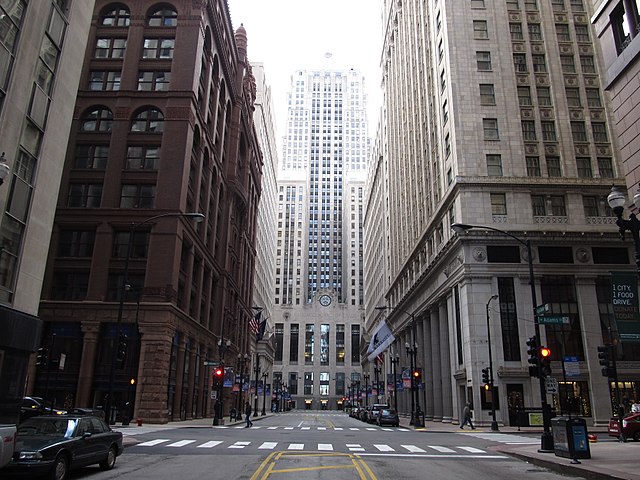
The Chicago Board of Trade Building, which was constructed in 1930, is now a National Historic Landmark. The building’s architect is William W. Boyington, and its height is 604 feet.
This structure is renowned not just for its art deco architecture, but also for its expansive trading floors, massive stone carvings, and sculptures. At the summit is a statue of Ceres, the goddess of grain, made of aluminum.
Over the past few years, the structure has attracted people from various locations. It is also an ideal location for filming, and the property’s administration and owners have won accolades for their preservation efforts.
This building’s dark windows, limestone piers, and streamlined geometric shape have been renovated throughout the years, yet it has retained its remarkable aspect.
10. Two Prudential Plaza
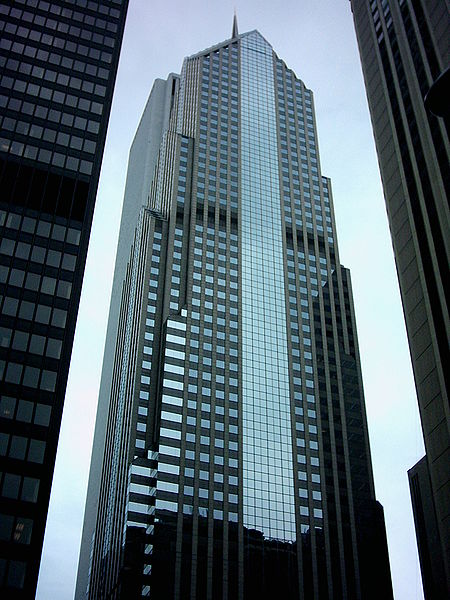
Chicago, Illinois’s Two Prudential Plaza is a 64-story skyscraper in the Loop neighborhood.
It is the closest skyscraper to 1,000 feet in height (995.0 ft), making it the sixth-tallest in Chicago and the 28th-tallest in the United States.
The building, which was constructed in 1990, was designed by Loebl Schlossman & Hackl, with Stephen T. Wright serving as chief architect.
It has been honored with eight different accolades thus far, including the title of “Best Structure” from the Illinois chapter of the Structural Engineers Association in 1995.

